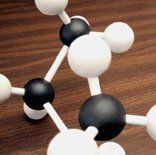Wayne Poulter, 53, will receive the American Cancer Society’s Volunteer of the Year.
Poulter, who was diagnosed with multiple myeloma in December 1997, is quick to point out that he isn't downplaying the seriousness of cancer.
Still, he finds it a bit of a surprise that he is being recognized for the effort he put in to helping those who already helped him.
"My wife and I know an awful lot of volunteers that put in a tremendous amount of effort," he said. "So why would I be chosen? To this minute it doesn't make sense to me. I just enjoy and believe in what we're doing."
Poulter has reason to believe that what he and the American Cancer Society are doing makes a difference.
In 1997 Poulter was feeling some pain in his back and side.
Assuming it was just another bout of kidney stones, he decided to go to the doctor.
Instead he was told that he had an incurable cancer: multiple myeloma, a type of cancer formed by cancerous plasma cells in the blood.
It is the same form of cancer that struck Geraldine Ferraro.
"I didn't know how to pronounce multiple myeloma for 30 days," Poulter said. "I remember calling the American Cancer Society hotline because of the shock of being diagnosed and the number said there was 33- or 36-month life expectancy after being diagnosed. Those were just numbers, but it scared the heck out of me."
Those numbers stuck in his head until a family friend put him in touch with Mel Goldstein, a former professor of Poulter's at Western Connecticut State University. Discussing his diagnosis with Goldstein was, he said "almost serendipitous."
"I was preparing for those three years in my head — what I was going to do to prepare my family and everything. Then I had lunch with Dr. Mel and he told me, do not read any more on the Internet, it's only numbers, it's only stats," Poulter said. "That was my turning point."
Poulter's cancer moved slowly, but after the first year the cancer cells began to grow. It was about two years after his diagnosis that he underwent a stem cell transplant.
Poulter had remained in contact with Goldstein and just a year before his levels began to rise Goldstein had told him that he had begun treatment with the drug thalidomide.
It will be five years in January that Poulter has been on thalidomide and, he said, "I'm still amazed it's kept my cancer at bay all this time — and thankful, by the way."
While it's hard to imagine much good coming from such a potentially deadly disease, Poulter has managed to find a silver lining.
Before his diagnosis Poulter never paid any attention to cancer but after his stem cell transplant he attended his first Relay for Life, in Bethel where his sister-in-law Cheryl Pinkos had formed a team.
Poulter liked the positive environment and has been participating in relays ever since, even becoming involved in relay committees.
His participation in Relay for Life led Poulter to meet a number of other cancer survivors who helped him through his illness and inspired him.
Finally, he decided that the relay wasn't enough. He wanted to do more to help them and to help the doctors, nurses and others who dedicated so much time and energy to cancer patients.
And he knew just the place to do it — the Praxair Cancer Center at Danbury Hospital.
"When I would walk through the Praxair Cancer Center I saw all this wall space and all this aisle space and I got to thinking what it would be like to cancer survivors, relatives, nurses, doctors — anybody that was touched by cancer — if they would submit a piece of art and we displayed that art in the halls, in the aisles and on the walls of the Praxair Cancer Center," he said. "The idea behind Joy of Survival was that maybe someone who has just been diagnosed with cancer will walk out and say, 'Sure, I've just been diagnosed with cancer but look at the life here.
So Poulter put pen to paper and wrote down his vision, writing two or three pages of goals and objectives, preparing to sell the idea to the powers that be at the Community Cancer Center, a collaboration of the American Cancer Society, Praxair Cancer Center and Ann's Place, the home of I CAN cancer support services, where Poulter attended support meetings.
Almost before he knew it all three organizations were on board and the "Joy of Survival" art exhibit was born.
The show, which ran from June 2 though June 30, featured more than 100 pieces of art that cancer survivors and others touched by the disease created to express their experiences.
"It was very, very successful, but it really had nothing to do with me. Maybe I had the idea but the support and the dedication and the hard work of the three groups on this project was just stupendous," he said. "I'm bragging because it's the truth. It was probably the most heartwarming and successful projects I've been involved in."
And, he noted, creating the show as a token of appreciation was the least he could do for the people that not only helped him through the toughest times in his life but helped him to emerge stronger.
Now, he hopes, he can continue to spread some of that hope and optimism to others who find themselves in situations similar to his.
"I'm an example for other survivors that with dedication, a good attitude and family support you can still have a very good, happy life," he said. "I think my wife agrees with me that they can look at me, that after seven years of having an incurable cancer that can be aggressive, that you can still survive this."





